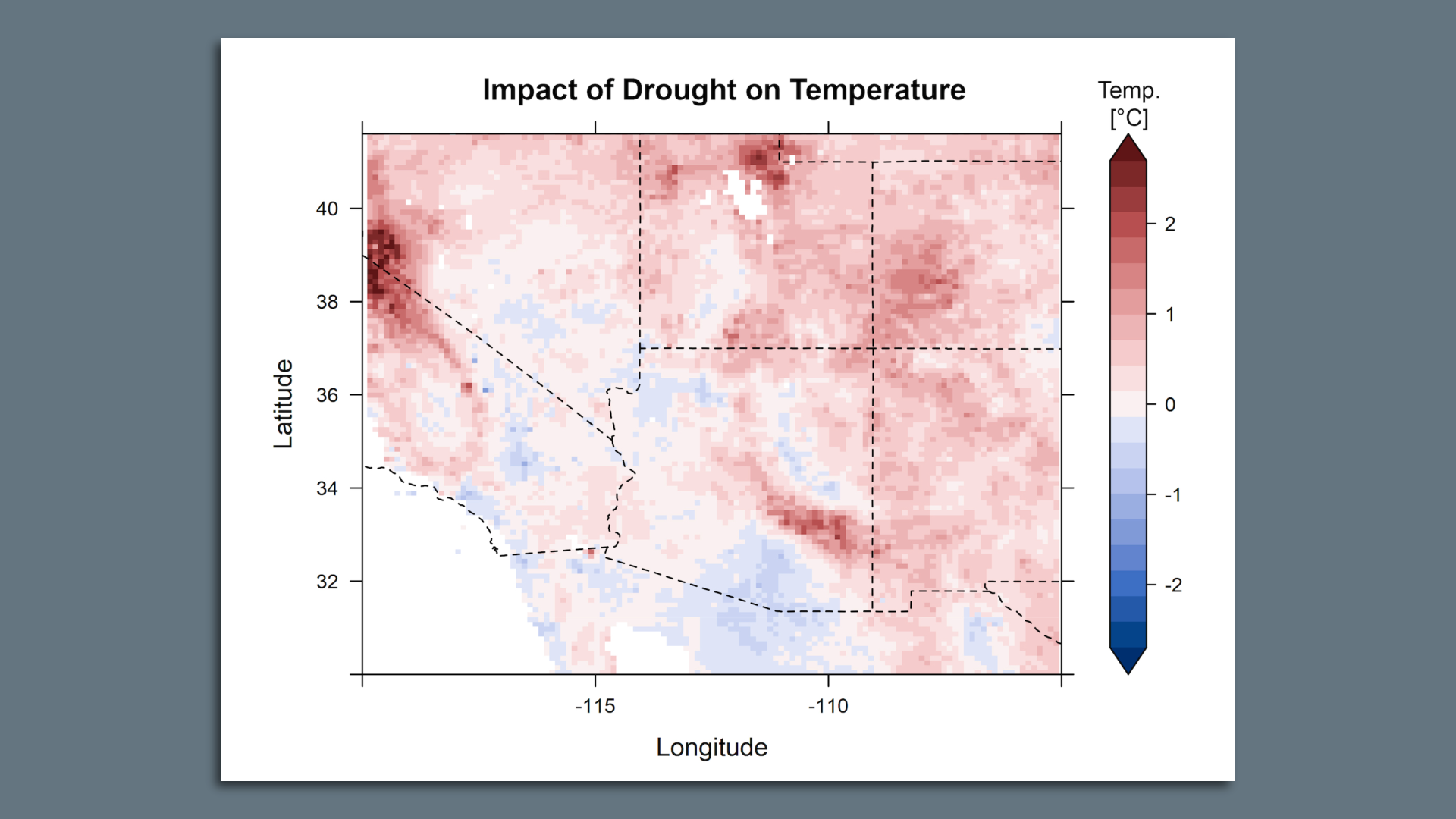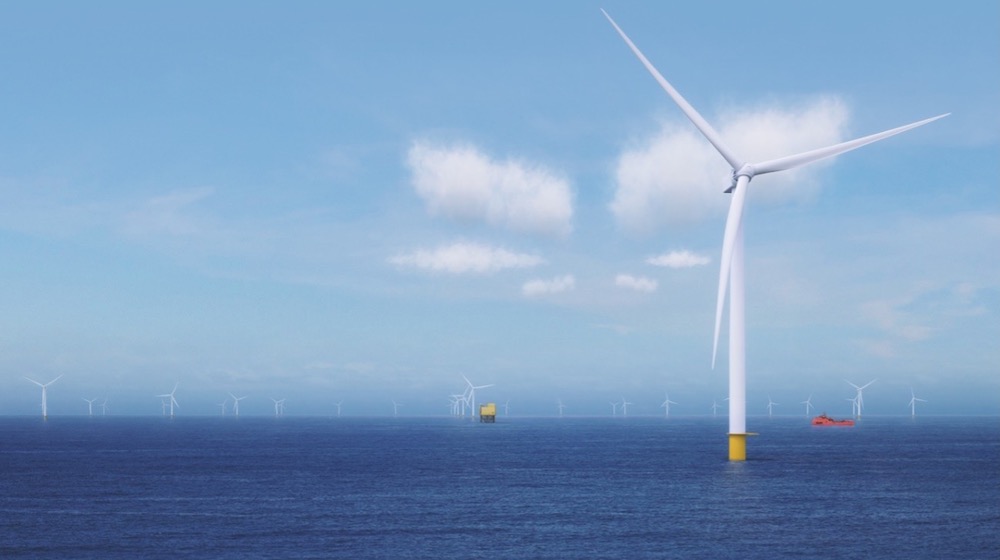| | | | | | | Presented By Equinor | | | | Axios Generate | | By Ben Geman and Andrew Freedman · Jun 29, 2022 | | 🌄 Good Wednesday morning. Today's newsletter, edited by Mickey Meece, has a Smart Brevity count of 1,228 words, 5 minutes. 👀 All eyes will be on the U.S. Supreme Court, where a decision in West Virginia v. EPA is possible (though not guaranteed) after 10am ET. 🎶 It's summer, with sunshine in D.C. today, and that has me thinking of the first line of "Rylan" from The National, who have today's intro tune. | | | | | | 1 big thing: Threat of compounding climate extremes |  | | | Illustration: Aïda Amer/Axios | | | | Two new studies shed light on the increasing risks the world faces from global warming and how such dangers can escalate in a cascading fashion, Andrew writes. Why it matters: One study published this week in the journal Geophysical Research Letters warns that certain extremes, such as drought, can exacerbate other climate hazards like heat waves. Driving the news: When climate change-related extremes interact, they can create cascading and unprecedented outcomes, per the new research. The big picture: The study shows that extreme drought in the Southwest during June of 2021 led to record heat throughout the region, and exacerbated the dry conditions. - Its authors say similar interactions between drought and heat likely enabled wildfires in New Mexico to grow to record sizes in the past few months.
- "The outcome is more than the sum of its parts," study co-author Benjamin Zaitchik, a Johns Hopkins University researcher, said via an email exchange.
- "We're seeing a climate change signal of earlier springs, faster drying, and early summer warmth feed back on itself, leading to larger impacts than we would predict taking each hazard on its own."
Context: The threat of compound, unprecedented events, is one reason scientists have been studying differences in risks associated with different levels of global warming. The second study, published today in the journal Climatic Change, uses projections from 21 computer models. - The researchers determined how much society's climate risk exposure, from effects such as water scarcity to heat stress, would differ by holding warming to 1.5°C, compared to more severe levels.
What they found: The study found that by limiting global warming to the most stringent Paris target, societal risks could be reduced by 85% compared to those associated with about 3.6°C (6.48°F) of warming. - Risks to people would be slashed by 10% to 44% globally if warming is limited to 1.5°C when compared to 2°C, it found.
What they're saying: Rachel Warren, the study's lead author and a researcher at the Tyndall Centre for Climate Change Research, said via an email exchange that it is not too late to prevent the most dangerous climate change outcomes. - "It is not the time to despair, it's the time to participate in an exciting decade of transformation," Warren said.
|     | | | | | | Bonus: Map shows drought yields hotter heat waves |  | | | Johns Hopkins University from Osman et al., 2022 in Geophysical Research Letters. | | | | The study on ties between the Southwestern megadrought and extreme heat found that unusually dry conditions boosted regional temperatures in June 2021 by up to 4°F. The greatest difference occurred in forested landscapes, rather than the open desert, Andrew writes. Why it matters: Compound events, in which one extreme feeds into another, are recipes for record-shattering outcomes. What they're saying: According to co-author Benjamin Zaitchik of Johns Hopkins University, the drought-heat nexus was on display again this spring when New Mexico's largest fire on record forced thousands to evacuate. - "Cascading dry-hot extremes could be particularly pronounced in ecologically sensitive and fire-prone forests," Zaitchik said via email.
|     | | | | | | 2. First look: New program to turn mines into clean energy hubs |  | | | Illustration: Aïda Amer/Axios | | | | The Energy Department will issue a request for information today to help guide a $500 million program to turn current or former mine lands into hosts of clean energy demonstration projects, Andrew writes. Why it matters: The program, run through the Office of Clean Energy Demonstrations and funded via the Bipartisan Infrastructure Law, aims to initially fund two to five clean energy projects on mine lands. - Key goals, the department tells Axios, are job creation and carbon pollution reductions.
The big picture: According to the EPA, the U.S. has about 17,750 mine land sites totaling 1.5 million acres. If each of these sites were to be devoted to producing clean energy, they could produce up to 89 gigawatts of electricity. - The program will be eligible for projects including solar, microgrids, direct air capture, along with advanced nuclear plants.
- According to DOE, two of the demonstration projects funded under the program must involve solar energy.
Zoom in: For such projects to expand beyond the demonstration phase, they will need to navigate a maze of regulations at multiple levels, be hooked up to the electricity grid and overcome any community resistance. What's they're saying: "Developing clean energy on mine lands is an opportunity for fossil fuel communities, which have powered our nation for a generation, to receive an economic boost and play a leadership role in our clean energy transition," Energy Secretary Jennifer Granholm said in a statement. |     | | | | | | A message from Equinor | | How Equinor is becoming a leader in America's offshore wind industry | | |  | | | | Equinor will power about 2 million homes in New York with renewable energy — boosting the economy, generating jobs and building new wind energy infrastructure. We're committed to becoming net-zero by 2050 by advancing the development of the Empire Wind and Beacon Wind offshore wind projects. | | | | | | 3. Funding spotlight: Twelve and Cleartrace get new backing |  | | | Illustration: Aïda Amer/Axios | | | | Twelve, a company that turns carbon dioxide into chemicals, fuels and materials, announced today it has raised $130 million in Series B funding, Andrew writes. Why it matters: The round, led by DCVC, will be put toward scaling the engineering, manufacturing and deployment of its industrial-scale technology, which is already used to make everything from sunglasses to aviation fuel. - "We want to do a lot more carbon transformation," CEO Nicholas Flanders tells Andrew. "And so what that looks like is us deploying systems at customer sites to convert their CO2 emissions back into useful materials."
- Twelve's partners include Procter & Gamble, Shopify, NASA and the U.S. Air Force.
Meanwhile, Cleartrace, a carbon accounting software firm based in Austin, Texas, has raised $20 million, led by ClearSky, with "strategic financing" from Brookfield Renewable, EDF Energy North America, Tenaska and Exelon. Why it matters: Cleartrace is part of a wave of startups seeking to enable companies to quantify and reduce their emissions. Zoom in: The company tracks decarbonization for all of Iron Mountain's U.S. data centers, Brookfield Properties' premier skyscraper, One Manhattan West, and JPMorgan Chase's offices. What they're saying: "We are the truth serum" for clients to prove their renewable energy bona fides, Cleartrace CEO Lincoln Payton says in an interview. "It's auditable, it's provable, and it's the highest quality data." |     | | | | | | 4. Frontier facilitates its first carbon removal projects |  | | | Illustration: Sarah Grillo/Axios | | | | Frontier, a new initiative that has made an advance market commitment of $925 million to speed the development of carbon removal technologies, has facilitated its first purchases from six companies around the world, the group announced today. Why it matters: Along with rapid and sustained carbon emissions cuts, studies show that carbon removal tech needs to be quickly and dramatically scaled up to reduce human-caused climate change, particularly after 2050. The big picture: Following a review from an expert advisory panel, Frontier has decided to commit to purchases from AspiraDAC, Calcite-Origen, Lithos Carbon, RepAir, Travertine, and Living Carbon — on behalf of Stripe. - Frontier is spending $2.4 million on carbon removal from these six companies and will provide another $5.4 million if projects reach certain technical milestones.
What they're saying: "Roughly by 2050, we're going to need about 6 billion tons of (carbon) removal every single year," Nan Ransohoff, head of climate at Stripe, who also leads Frontier, says in an interview. "And to date, about 10,000 tons total have been permanently removed," she said. - "We have a huge, huge amount of work to do."
|     | | | | | | 5. 🏃🏽Catch up fast: European climate plan moves forward | | 🚘 After a marathon of 16 hours of debate, EU environment ministers agreed on a package of proposed climate laws early Wednesday, Reuters reports. Why it matters: By agreeing to the package, it becomes more likely the measures will become law during EU Parliamentary deliberations. |     | | | | | | A message from Equinor | | The energy transition is the defining opportunity of our time | | |  | | | | Equinor is accelerating the energy transition by growing our renewable energy portfolio and cutting greenhouse gas emissions. Through the Empire Wind and Beacon Wind offshore wind developments, we will power about 2 million homes in New York with renewable energy. | | | | 📬 Did a friend send you this newsletter? Welcome, please sign up. Thanks for reading and see you back here tomorrow. |  | It's called Smart Brevity®. Over 300 orgs use it — in a tool called Axios HQ — to drive productivity with clearer workplace communications. | | | | | | Axios thanks our partners for supporting our newsletters. If you're interested in advertising, learn more here.
Sponsorship has no influence on editorial content. Axios, 3100 Clarendon Blvd, Suite 1300, Arlington VA 22201 | | | You received this email because you signed up for newsletters from Axios.
Change your preferences or unsubscribe here. | | | Was this email forwarded to you?
Sign up now to get Axios in your inbox. | | | | Follow Axios on social media:    | | | | | |
No comments:
Post a Comment